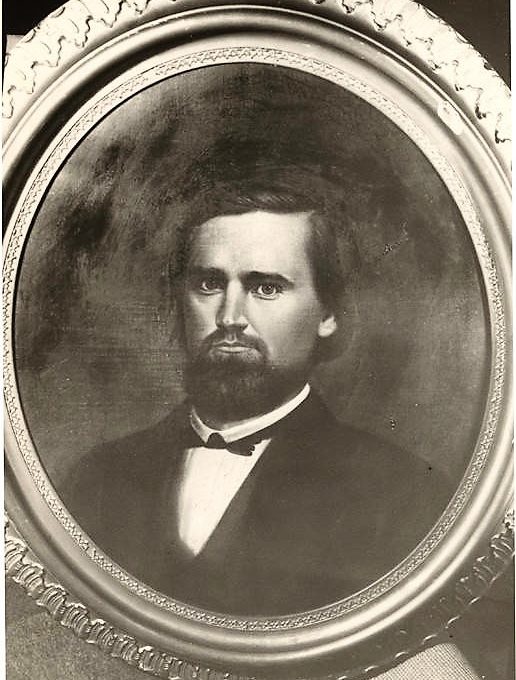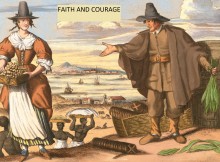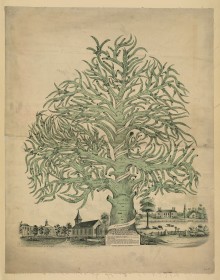Biographies of the Delegates to the Alabama Secession Convention
Part VI 1
John Martin Crook
Calhoun County
John Martin Crook was born about 1810 in Spartanburg District, South Carolina. The son of James and Amelia Crook, he moved with his parents to Calhoun County, Alabama, in 1834. Receiving a good education and becoming a lawyer, he participated in politics but had little desire to be a public official. After inheriting his father’s plantation he engaged in farming on a large scale, He was married to Margaret Miller and Narmesia Woodruff, but it is not known which was his first wife. His children were Emmett Farrow, James, and John Martin.
ADDITIONAL NOTES: From History of the Hume, Kennedy and Brockman Families: In Three Parts, By William Everett Brockman, 1916, p. 234. “JOHN MARTIN CROOK was born in Spartanburg, S. C., in 1810, and married Margaret Miller. He was a lawyer and farmer, and was a delegate to the Alabama Secession Convention of 1860 and took an active part in the secession. His wife died soon after the birth of John Martin, Jr., and Mr. Crook then married Normesia Woodruff.
Children:
- James Crook, twice married
- Margaret, m. J. L. Green, no issue
- Mattie, m. Lawrence Dean Miller, two children who died young
- John Martin, Jr. M. Ann Wheatley
- Emmett F., Probate Judge, Calhoun Co., Alabama.
- Rosa, m. Mr. Gordon.
Albert Crumpler
Coosa County
A Methodist minister, farmer, tanner and shoemaker, Albert Crumpler was born November 29, 1808, near Norfolk, Virginia, and died in Talladega County on November 29, 1882, The son of Beasant and Elizabeth Crumpler, he moved .with his parents to Coosa County, Alabama, during the state’s early history. Soon after the Secession Convention adjourned, Crumpler was elected to the legislature. Although he preached, he would accept no money for it. He was a Mason. Married to Marie Zeigler of Autauga County, his children were Albert, Catherine and Lewis Henry.
Andrew Jackson Curtis
Choctaw County
Andrew Jackson Curtis ca. 1860-69 (Library of Congress)
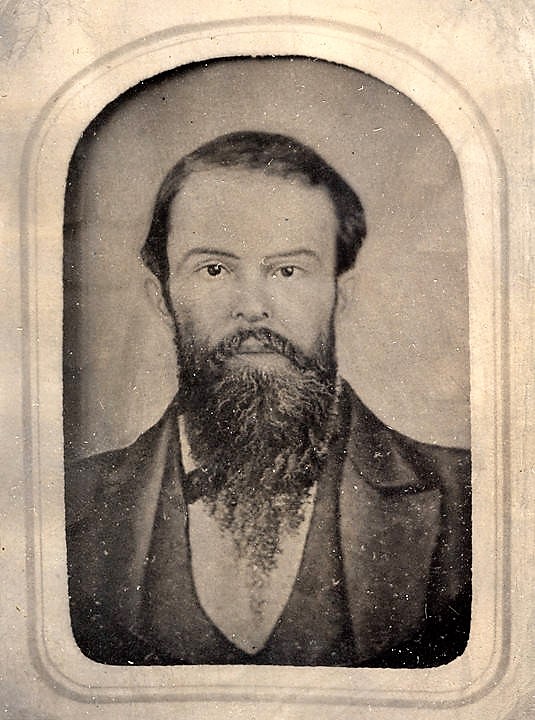
Born December 20, 1829, in Dinwiddie County, Virginia, Andrew Jackson was the son of Robert LaFayette and Elizabeth Curtis. His parents settled in the forks of the Warrior and Bigbee rivers in 1836. He received his early education in the country schools of his county and graduated from the college at Knoxville, Tennessee, in 1849. He studied medicine under his brother and completed his medical training at the University of Pennsylvania in 1851. Soon afterwards he went to Cuba to practice medicine and to observe the yellow fever epidemic, but returned to this country in 1853 and began the practice of his profession in Choctaw County.
In 1857 he traveled through the Northwestern and Western states prospecting and as a correspondent of the Mobile Mercury and other newspapers and periodicals. Upon returning home from his travels, he purchased some property near Mt. Sterling in Choctaw County and engaged in farming. During the war, Doctor Curtis was a company surgeon for a time but he was forced to resign because of poor health. Selling his farm in 1870, he moved to Meridian, Mississippi, and practiced medicine at that place until his death October 25, 1872. He was a Presbyterian and Mason. On October 19, 1854, he married Olivia Octavia Chaney of Sumter County.
John Wilhite Lewis Daniel
Barbour County
The son of James Lewis and Matilda Ann Daniel, he was born August 1, 1831, at LaGrange, Georgia. His parents moved to Tuskegee, Alabama, and thence to Eufaula to live. He received his early education at Tuskegee and was subsequently admitted to the bar. He located at Midway and practiced his profession in Barbour and Bullock counties. At the outbreak of the war Daniel raised a company of soldiers and became its captain; he was promoted to the rank of major when the Fifteenth Alabama Infantry Regiment was organized. Resigning after the battles around Richmond to raise a company for “Hilliard’s Legion,” Daniel was placed on detached service for conscription work and he served in this capacity for the remainder of the war. He was a Methodist and a Mason. In 1861 he married Belle Green of Eufaula and there were five children, Estelle, Edward, Bert, John, and Gilmer. Daniel died at Midway on August 31, 1876.
Edmund Spann Dargan
Mobile County
Edmund Spann Dargan (Alabama Department of Archives and History)
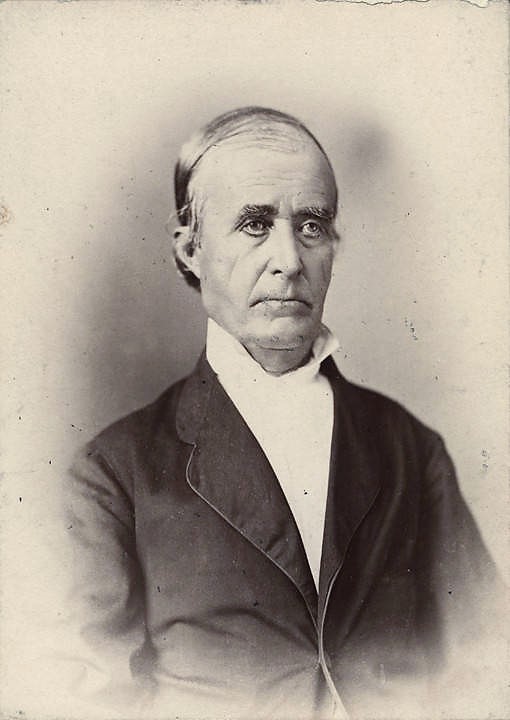
Lawyer, congressman and chief justice of the Alabama Supreme Court, Edmund Spann Dargan was born April 15, 1805, in Montgomery County, North Carolina, and died on November 22, 1879. A son of a Baptist minister, who died prematurely, he was forced to support himself at an early age. While working on. a farm he obtained a fair knowledge of English, Greek, and Latin. At the age of twenty-three, he began to read law in Joseph Pickett’s office at Wadesboro, North Carolina. In 1829 he migrated to Washington, Autauga County, Alabama, where he taught school, practiced law and served as justice of the peace. He moved to Montgomery in 1833 and was an unsuccessful candidate in 1840 for the legislature. Soon after his defeat at the polls, the legislature elected him to the judgeship of the Mobile Circuit over William Hale, but he retired from this position in 1842. Elected Mayor of Mobile and to the state senate in 1844, Dargan resigned from the latter position to make a successful race for Congress against William D. Dunn.
Edmund Spann Dargan house built by Dargin (Library of Congress)
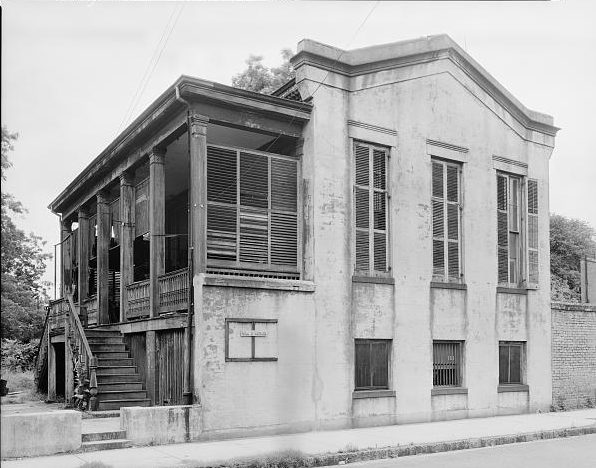
After declining to run for reelection to Congress in 1847, the legislature elected him to succeed Judge Goldthwaite on the State Supreme Court bench and he became Chief Justice two years later. Judge Dargan resigned from the Supreme Court bench in 1852 and resumed his practice in Mobile. The people of the Mobile District elected him to represent them in the Confederate Congress, but he declined to run for the second term. His wife was Roxana Brock of Montgomery. There were evidently two or more children, but the only one known was a son whose name was Moro.
NOTE: ADDITIONAL INFORMATION can be found about at Encyclopedia of Alabama http://www.encyclopediaofalabama.org/article/h-3927 and Edmund Spann (or Strother) Dargan – https://www.ncpedia.org/biography/dargan-edmund-spann-or
Dewitt Clinton Davis
Covington County
Descending from English royalty Dewitt Clinton was the son of Nicholas and Martha Davis. Born in Limestone County, Alabama, on January 14, 1830, he was the seventh son and the eleventh child of a family of twelve children. His parents moved from Virginia to Kentucky in 1808 and to Alabama during the territorial period. Although an advocate of secession, it is interesting to note that his brother, Nicholas, was one of the leaders of the group that was opposed to it. He was married to Susan Lowe. (Findagrave.com memorial 75240719)
Nicholas Davis, Jr.
Madison County
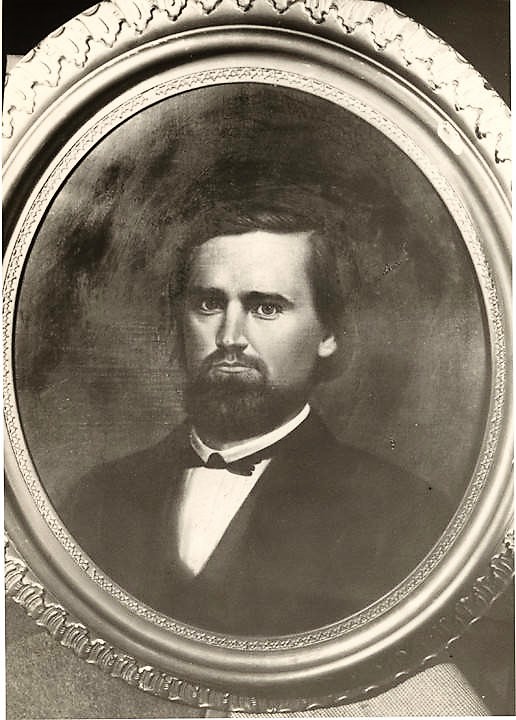
Son of Nicholas and Martha Davis, he was born January 14, 1825, at Athens, Alabama, and died in Huntsville on November 3, 1874. Partially educated in his native state, Davis received his legal training at the University of Virginia. During the Mexican War, he was a lieutenant in the Thirteenth Infantry Regiment. After the Mexican War, he was admitted to the bar and began the practice of law at Athens. He was elected to represent Limestone County in the state legislature in 1851. Moving to Huntsville in 1853, he was elected solicitor in 1855, a position held by him for five years. In 1860 Davis was on the Douglas electoral ticket and spoke in North Alabama in opposition to the secession movement. Toward the close of the Secession Convention, he was elected to succeed Thomas Fearn as deputy to the Confederate Congress. Soon after the war began, he was elected lieutenant colonel of the Nineteenth Alabama Regiment, but the commission was declined; he later commanded a battalion for a short time. Refusing to take the Federal oath of allegiance after the war, his property suffered with that of his neighbors. Davis was married to Sophia Lowe. The children born to this union were Lowe, Sophia Lowe, William and Nicholas. (Findagrave.com memorial 6420418)
1 Transcribed from The Alabama Historical Quarterly, Vol. 03, Nos. 03 & 04, Fall and Winter Issue 1941


